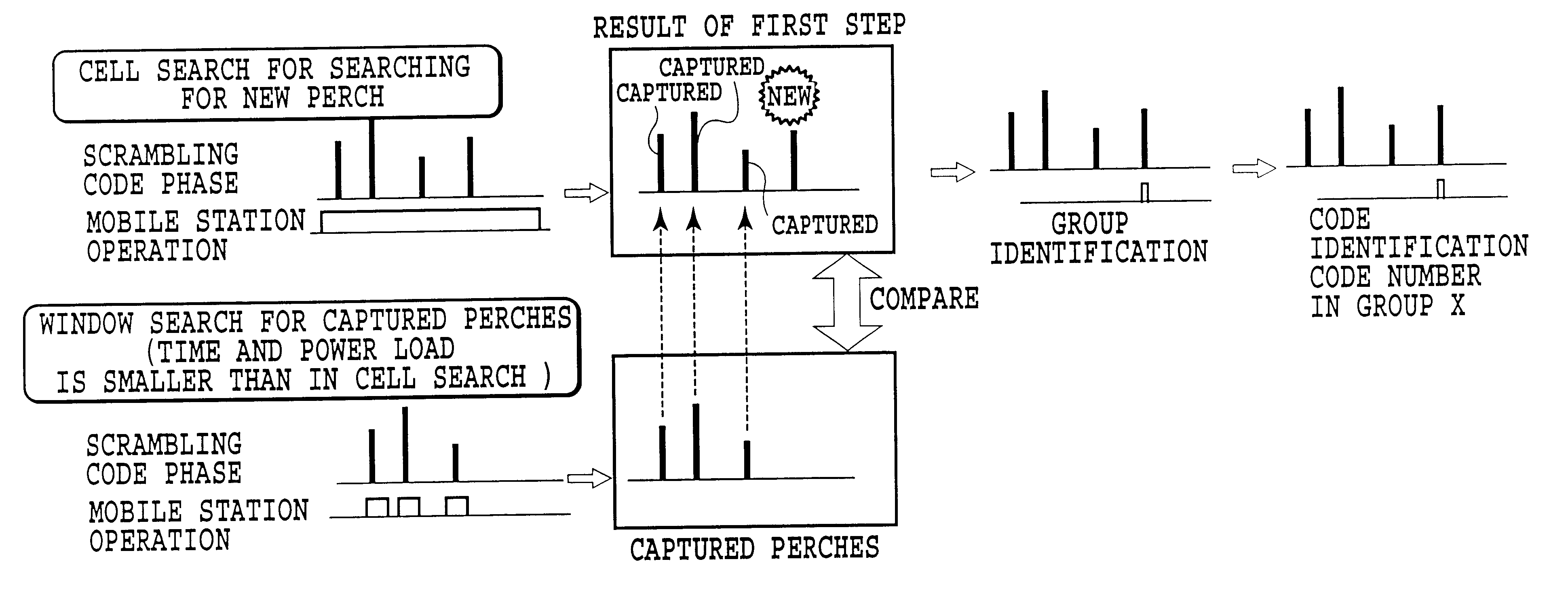Control method of searching neighboring cells, mobile station, and mobile communication system
a control method and cell technology, applied in the field of mobile communication system, can solve the problems of inability to determine inability to detect the timing, and inability to change the relative timing of scrambling codes between base stations
- Summary
- Abstract
- Description
- Claims
- Application Information
AI Technical Summary
Benefits of technology
Problems solved by technology
Method used
Image
Examples
second embodiment
Next, the second embodiment of the present invention will be described with reference to FIGS. 12-15.
FIG. 12 is a block diagram showing a configuration of a mobile station to which the present invention is applied.
FIG. 12 shows only portions of the mobile station associated with the present invention.
A mobile station 300 comprises a radio signal transceiver 302, a traffic channel transceiver 304, a user interface 306, a perch channel receiver 308, a perch channel receiving quality measurement controller 310, a paging signal receiver 312, a common controller 314, a memory 316, an antenna 318 and a common bus 320.
The radio signal transceiver 302 connected to the antenna 318 is a device for receiving user information and a control signal transmitted from a base station after radio frequency modulation, and for transmitting user information or control information about voices or data to be transmitted from the mobile station to the base station. Although it is integrally illustrated in ...
PUM
 Login to View More
Login to View More Abstract
Description
Claims
Application Information
 Login to View More
Login to View More - R&D
- Intellectual Property
- Life Sciences
- Materials
- Tech Scout
- Unparalleled Data Quality
- Higher Quality Content
- 60% Fewer Hallucinations
Browse by: Latest US Patents, China's latest patents, Technical Efficacy Thesaurus, Application Domain, Technology Topic, Popular Technical Reports.
© 2025 PatSnap. All rights reserved.Legal|Privacy policy|Modern Slavery Act Transparency Statement|Sitemap|About US| Contact US: help@patsnap.com



